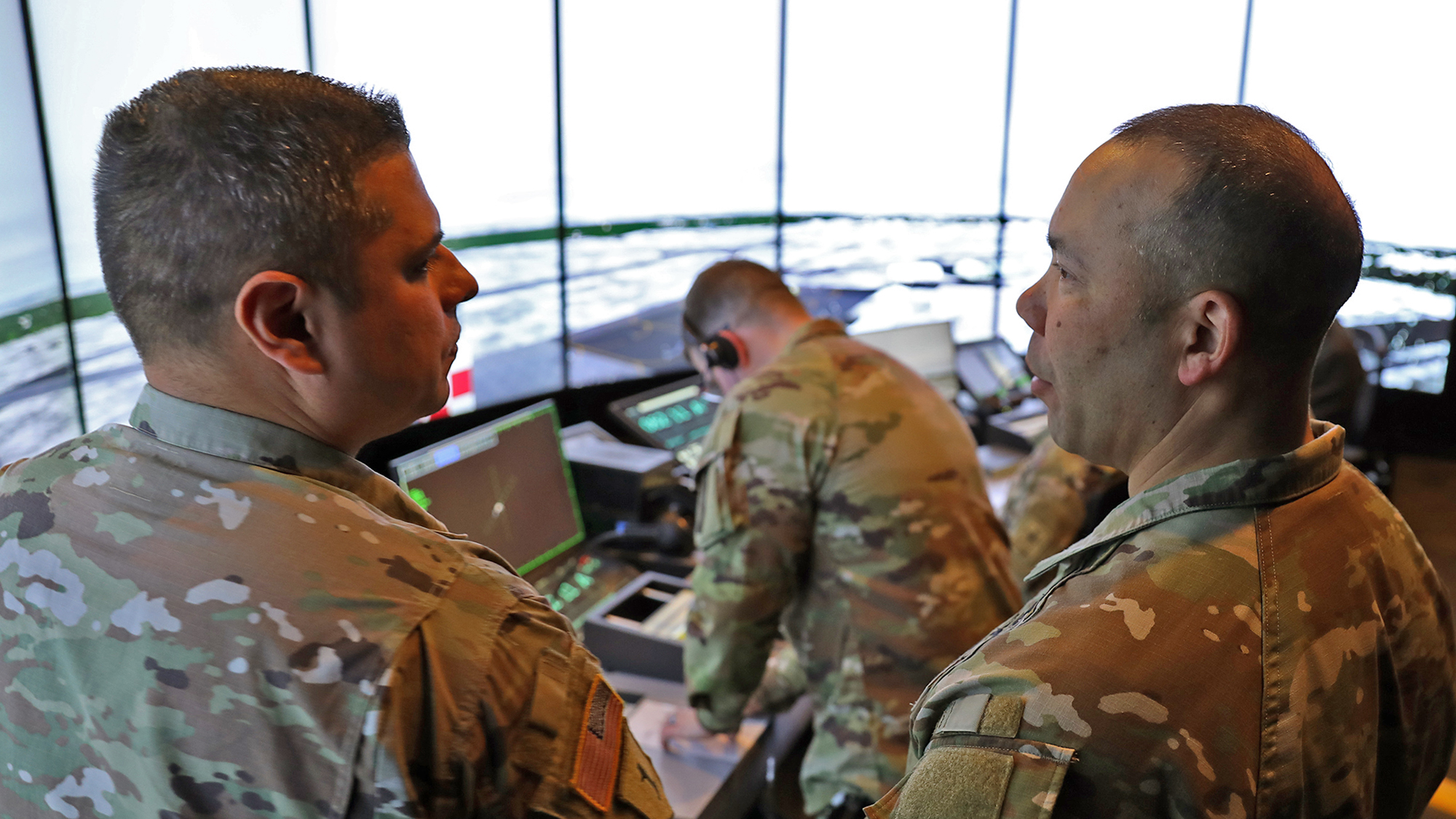Continuous Transformation: The Future of Command and Control

The stakes are high and the time to act is now. Our adversaries are investing heavily in technologies to gain their own information advantage. If we fail to adapt, we risk being outmatched. To prevail across domains — land, sea, air, space, cyber, and the electromagnetic spectrum — the Army and Joint Force must be able to collect, process, and disseminate information faster than the adversary.
Toward this end, the Army is undergoing a multiyear mission to modernize its tactical comms and make assets smaller, faster, and more multipurpose. This effort has been divided into two projects: Command and Control (C2) Fix and C2 Next. While C2 Fix focuses on the use of or experimentation with new or off-the-shelf solutions to solve current problems, C2 Next centers on ensuring that future C2 solutions are integrated, portable, multifunctional, and data-driven so that commanders and leaders at all echelons have the information they need when and where it is needed most. Industry is paramount in delivering these capabilities at scale. However, it will require a collaborative effort between the Army, industry, the acquisition community, and the entirety of the Department of Defense.
By focusing and collaborating on the following technologies, we can best support a true convergence of sensing, network transport, and effects needed to allow commanders to make more timely, informed decisions.
We’ve learned a lot of lessons … one of the things we want to start doing is transforming in contact, so we can start getting after some of these changes almost immediately.
U.S. Army Gen. Randy George
February 2024
Open architecture
Open architecture allows for rapid prototyping and testing of smaller, independent components that can be deployed quickly, allowing the Army to select and integrate the technologies that best fit its needs. A vendor-agnostic, open architecture for the Army also improves real-time decision-making via near-real-time processing and analyzing of data, providing commanders with the timely insights and situational awareness they need to deliver informed and actionable results. Leveraging investments of the intelligence community and other services, the Army will benefit greatly from an open hosting platform that enables the ability to integrate state-of-the-art applications to synchronize warfighting functions and make data-driven decisions.
Data-centric approach
Data is a strategic asset, enabling the Army to gain a decisive advantage in a complex, multi-domain operational environment. Data-driven insights accelerate the decision-making process for commanders and leaders at all echelons. The ability to access and synthesize data rapidly with real-time modeling optimizes battle staff’s ability to make timely, accurate recommendations related to C2, fires, force protection, information, intelligence, logistics, and maneuvers. This data-centric approach enables predictive analytics that can anticipate enemy actions with live data, provide early warnings, and develop countermeasures by identifying data-based patterns and anomalies.
Artificial intelligence and machine learning
The data-centric C2 environment is further improved by leveraging AI and ML algorithms to simplify and reduce the cognitive burden on leaders at all levels. These technologies offer immense potential for the Army to quickly revolutionize its operations, particularly in a complex, multi-domain environment against a peer or near-peer adversary. The potential and readily available benefits of AI and ML are numerous: for example, the ability to process vast amounts of data and identify patterns from multiple sources — including sensors, satellites, social media, and human intelligence — as well as patterns in the data that humans might miss, such as enemy tactics, weaknesses, or emerging threats. AI can also speed up training, creating realistic simulations that augment human capabilities, and optimize operations such as supply chain management, maintenance, and transportation to deliver solutions quickly.
Resilient network transport
The next-generation C2 environment will only be possible if the network transport backbone is resilient and able to withstand the adversary’s desire to contest the U.S. and its allies in space, cyber, and the electromagnetic spectrum. The network backbone must exploit every means possible to enable assured connectivity for large-scale combat operations. A transport-agnostic environment, leveraging software-defined networking and multi-path solutions, requires a comprehensive cybersecurity posture that permeates every level of the Army, from the enterprise to edge devices and wearables. Employing robust zero-trust multifactor authentication and identity management will allow the Army to benefit from all modes of available network transport.
Interoperability
In a complex, multi-domain operational environment against a peer adversary, the Army will need to fight with partners and allies. The ability to seamlessly share information and coordinate actions with joint and coalition partners is essential to optimizing next-generation C2. As the Army transforms in contact, it would benefit from designating joint interoperability standards for data exchange, communication, and systems integration; prioritizing joint training and exercises by conducting regular joint and coalition training; and establishing requirements for C2 systems with interoperability in mind by incorporating open architectures and standards.
Transforming C2 for the future
The visionary strategy of Army senior leadership to continuously transform requires both innovation and agility at scale and speed. By adopting the C2 Fix and C2 Next projects, the Army has solidified its commitment to accelerating the development and fielding of new systems. Industry must stay ready to continue aligning with the needs of the Army to develop relevant, integrated, and critical command and control technology that can help solve some of the Army’s most difficult problems.